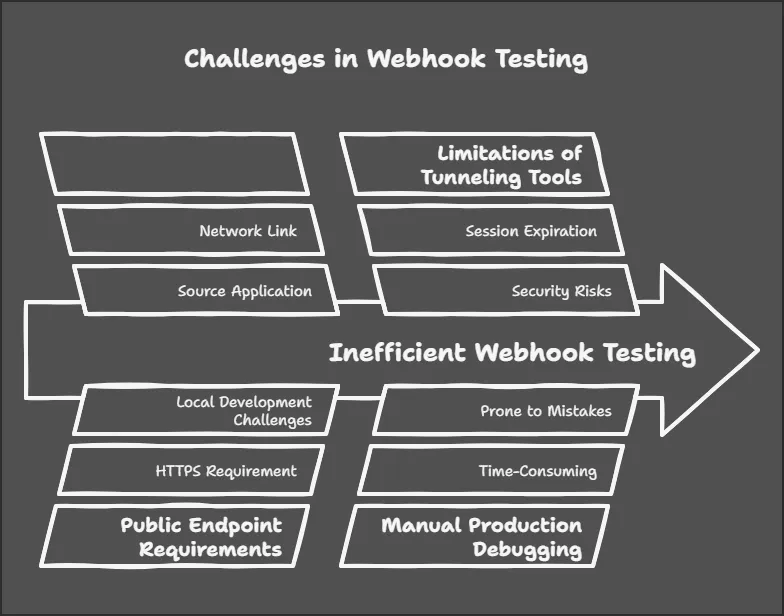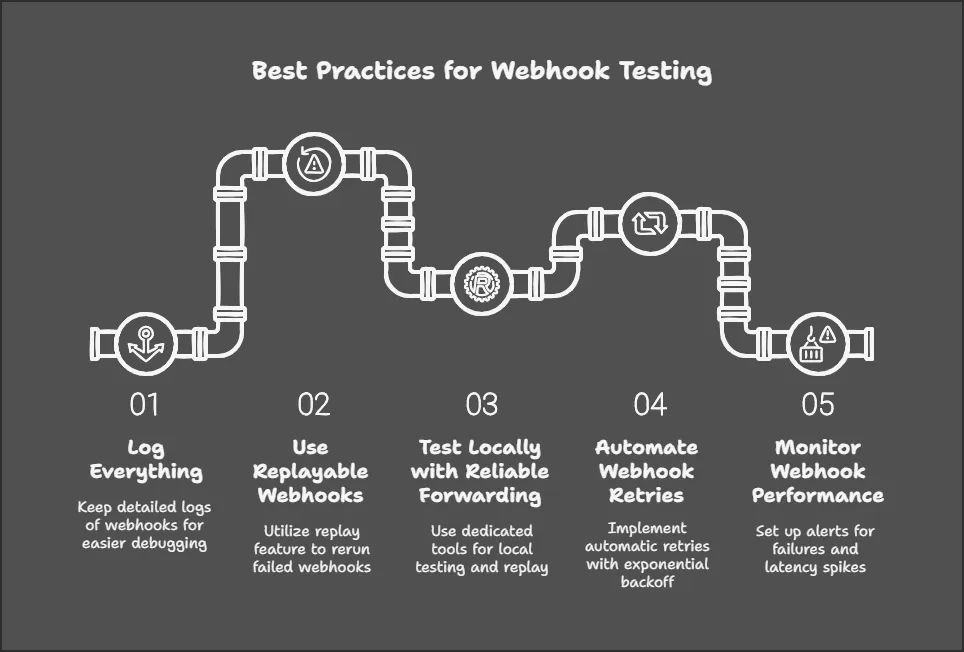Mastering Webhook Testing
Webhooks are the backbone of real-time integrations, allowing applications to communicate instantly when an event occurs. But while they make automation seamless, testing webhooks can be a frustrating experience if you don't have the right tools or strategies in place.
Unlike traditional API testing, where requests and responses are controlled within a single system, webhooks involve multiple moving parts, making them notoriously tricky to debug and test. Whether you're developing locally, troubleshooting in production, or trying to ensure long-term reliability, a solid webhook testing workflow is essential.
In this guide, we'll explore:
- Why webhook testing is difficult
- Common issues developers face
- Best practices for debugging webhooks efficiently
- How Hooklistener can simplify the entire process
Why Are Webhooks So Hard to Test?

At first glance, testing a webhook sounds simple: a service sends a request, your app receives it, and you inspect the payload. But in reality, things often break in unexpected ways.
More Than Just Code – The Complexity of Webhook Debugging
Unlike debugging regular software, where you step through your own code to identify issues, webhooks introduce multiple external factors that make testing challenging:
The Source Application (Webhook Producer)
You don't control when and how often webhooks are sent. This makes it difficult to test specific scenarios or edge cases on demand.
Your Receiving Server (Webhook Consumer)
Your infrastructure must process and respond correctly to each webhook. Any issues in your server configuration, code, or environment can cause failures.
The Network Link
Webhook delivery depends on stable, real-time internet communication. Network issues, timeouts, and latency can all interfere with successful webhook delivery.
These dependencies introduce issues such as network failures, latency spikes, authentication errors, and payload inconsistencies, all of which complicate testing.
Another Key Hurdle: Webhooks Require a Publicly Accessible Endpoint
Most webhook providers require your server to be publicly accessible via HTTPS, which makes local development harder. Without an exposed endpoint, testing webhooks locally is nearly impossible unless you use tunneling tools like ngrok.
What a Typical Webhook Testing Setup Looks Like

Many developers use the following stack for webhook testing:
Webhook Provider
Services like Stripe, GitHub, or Shopify that generate and send webhook events when specific actions occur.
Tunneling Tool
Services like ngrok that create temporary public URLs to expose your local development server to the internet.
Your Application's API
The endpoint in your application that receives and processes incoming webhook payloads.
HTTP Client
Tools like Postman that allow you to manually construct and send webhook payloads for testing purposes.
While this setup works in local development, it starts to break down when dealing with real-world webhook failures in production.
Where Traditional Webhook Testing Falls Short

The stack described above gets the job done for small-scale debugging, but as your system grows, its limitations become painfully clear:
1. You Can't Control the Webhook Source
Webhook providers operate independently from your infrastructure, meaning you can't force them to resend a webhook when needed. This makes debugging intermittent failures a nightmare.
2. Local Development Requires Workarounds
Tunneling tools like ngrok are useful but come with session expiration limits, manual setup, and security risks. Plus, they are not meant for production debugging.
3. Production Debugging is Manual and Error-Prone
When a webhook fails in production, developers often manually reconstruct requests in Postman to replicate and troubleshoot issues. This approach is:
Time-consuming
Every webhook failure requires a separate manual request to be reconstructed and tested, wasting valuable development time.
Prone to mistakes
Manually recreating webhook payloads often leads to inaccuracies that make debugging even more difficult and unreliable.
Not scalable
As your system grows, manually retrying multiple failed webhooks becomes impractical and impossible to manage effectively.
As webhook complexity grows, these inefficiencies start to break down your workflow, leading to missed events, lost data, and frustrating debugging cycles.
Best Practices for Webhook Testing & Debugging
Need to debug webhook issues?
Use our webhook debugger to inspect payloads, analyze failures, and fix webhook problems.

To avoid these pitfalls, adopting best practices for webhook testing is crucial.
1. Log Everything
Since webhooks are sent asynchronously, keeping detailed logs of every received webhook (including headers, payloads, and timestamps) makes debugging far easier.
2. Use Replayable Webhooks
Some webhook providers allow replaying past events. If available, use this feature to rerun failed webhooks without waiting for a new trigger.
3. Test Locally with Reliable Forwarding
Instead of relying solely on ngrok, consider using a dedicated webhook testing tool that can persist webhook payloads and replay them on demand.
4. Automate Webhook Retries
Failures happen. Instead of manually resending failed webhooks, implement automatic retries with exponential backoff to ensure reliable event delivery.
5. Monitor Webhook Performance
Set up alerts for unusual webhook failures, latency spikes, or missing responses, so you can proactively debug issues before they impact users.
A Smarter Way: Testing Webhooks with Hooklistener
Ready to test webhooks right now?
Use our free webhook tester to start testing webhook endpoints instantly.

Instead of dealing with manual testing, unreliable tunneling, and frustrating production debugging, Hooklistener offers a seamless solution for managing webhooks at any stage of development.
Why Hooklistener?
Instant Webhook Debugging
View real-time payloads, headers, and responses in an intuitive UI.
Forward to Local Development
No more ngrok session timeouts—automatically routes webhooks to your local server.
Replay & Debug Past Webhooks
Easily replay any webhook event without waiting for another trigger.
Schedule Webhooks for Testing
Create recurring webhook calls to test system resilience.
Automated Error Alerts
Get notified when webhooks fail, allowing faster debugging.
Final Thoughts

Webhook testing doesn't have to be frustrating. With the right tools, you can eliminate guesswork, automate retries, and debug smarter—not harder.
Want to streamline your webhook testing process?
Try Hooklistener and simplify your workflow today! Our platform provides all the tools you need to test, debug, and monitor your webhooks effectively.